This blog is created for the purpose of Group A's group deliverables in COMM 10.
Don't wanna be here? Send us removal request.
Video
youtube
365 Days: A “50 Shades of Grey” Rip-off, That’s Actually Worse
Rise to Popularity and Underestimation of People’s Libido
365 Days is an erotic drama film by a Polish author and cosmetologist Blanka Lipińska released this year. The film is based on a book about a young Polish woman who is snatched (kidnapped and drugged) from her everyday life by a Sicilian mob boss and who then gives her a year to fall in love with him. The film was briefly released in cinemas in the UK and in its native Poland before it was quickly made available on streaming service Netflix on June 7 with so little promotion. It quickly shot up the daily top 10 charts and reached the No. 1 spot by the end of the week. It also reached Netflix's top three in more than 20 countries. The movie had reached the whole world and quickly gained international recognition.
Despite the film's popularity, the film is currently in the Bottom 100 films on IMDb. But for some people, they watch movies, not because of the genre, neither because of an author or its actors, but because of a popularity chart. The viewer's decision on watching this movie, making it reach the top chart intrigued us, maybe the movie is good since so many people are watching it. Is it because being in quarantine, with limited human contact, had made people psychotically horny, longing for escape into fantasy? Is it because people like watching morally bereft movies about hot people having unusual sexual behavior, the same reason how they like Fifty Shades of Grey, and wanted similar movies? Nonetheless, what caught our attention is its rising popularity on Netflix, having in mind that movies on the top of the list are relatively good. So, we gave it a shot. And that’s two hours of our lives we will never get back.
What Does the Public Think?
If you search 365 Days reviews on Google, the first thing you’ll see is it’s 3.3/10 rating from IMDb, 1/5 on Letterboxd, 29% from user ratings on Rotten Tomatoes, and surprisingly 80% Google users that liked the film. Also, at the top are excerpts from two critic reviews:
“Although weirdly entertaining in its own sleazy way, this is an adolescent boy's dream about what women want, a sexual fantasy to "prove" that women who say "no" really mean "yes.” – Barbara Shulgasser-Parker, Common Sense Media
“With scenes glorifying physical bondage and outrageous dialogues, ‘365 Days’ ends up romanticising forced sex and manipulation.” – Ronak Kotecha, Times of India
Scrolling down further, you’ll see reviews from Times, New York Times, Variety, and other media sites basically saying the same thing, “It’s a bad movie.” It was hard to find reviews that were singing praises for the movie; however, we were still able to find some:
“Danielle Steel that had plenty of stories of pirates kidnapping ladies, or warring families taking a daughter until a truce/ marriage could be arranged, etc. But all these amazing writers wrote about strong women that didn’t just do what they were told, but found a way to make the untenable situation work to their advantage. I see the same here...” – Michelle Gilbert, Google User
“Political correctness is a disgrace and refrain some people from seeing the beauty of the main characters! Very intense, beautiful to see.” – Savanah D, Rotten Tomatoes User
“If I were to review this film seriously, it’s a solid 60%. But as a bit of indulgence in mindless sex, easily pushes it into the 90%, which is exactly why it’s so popular on Netflix. Not one for the terminally woke, though.” – Matt, commenter on Variety
As a rebut to the following reviews, we recommend reading Jessica Kiang’s review of the film on Variety:
https://variety.com/2020/film/reviews/365-days-review-365-dni-1234629333/
365 Days Reimagined
The only redeeming quality of the film is some of its soundtracks and nothing more. Every aspect of the movie is just problematic, and making an entirely new movie is easier than trying to change and make this one better. But let’s give this a try, to support Kiang’s statement, “no one ever went broke overestimating the horniness of a global population slowly emerging from pandemic-mandated isolation.” Basically, everyone just watched it for steamy scenes, and if that’s what people want, then we can give it to them, but by changing the plot completely.
First, we take Laura out of the picture. We take everything about the kidnapping, molesting, and sexual coercion and throw it out the window. We take an alternate route, where a woman from a similar background and is consenting to all of Massimo’s sexual desires is the leading lady. Well, good thing there already exists a character like that in the movie, Anna. We can keep the part where Massimo loses his dad in a tragic way, but it’s Mario who takes over the organization while teaching Massimo the ropes of the business, and the new twist, he is forced to marry someone from another family because of a promise made by their parents.
We portray Anna as someone who grew up in a misogynistic and violent home, who is tired of the Mafia life and wants out. Although Massimo has no intention of marrying Anna, they are still forced to bond together, and they slowly learn to listen and accept each other and come to the conclusion that they both want to live normal lives (all the while having hot steamy action, of course). We add another twist where Massimo’s most trusted man, Mario, is actually the one responsible for his father’s death. Mario failed to kill Massimo and so has resorted to molding him to be the perfect boss: cold, cruel, and calculating. As he witnesses Massimo softening because of Anna, he plots to murder them both. Massimo learns of this betrayal and realizes that Anna will always be in danger as long as they are in the Mafia. With Anna’s knowledge about her family’s businesses and Massimo of his own, they make a deal with the FBI giving them all the information they need to take down both Mafia organizations, fake their deaths, and walk unscathed. Leading new lives with whole new identities.
See? An interesting intense plot with amazing sex scenes is possible. Even stories from Wattpad are more developed and actually make sense than this hot mess of a film titled 365 Days.
On Hollywood’s Attempt to Represent Minorities
Hollywood actors often say they highlight the mundane and make stories of minorities known, but is that really the case? Or do they just say that because they know that’s what people want to hear?
The stories made known are not average at all- they appear to be a part of the minority but their experiences are almost fantasies in real-life. If they emphasize what has already been on emphasis our whole lives as “mundane” and as minorities, then they were not making any emphasis at all. Goes to show how the audience does not want clichés and boring stuff- so, instead, they make up or take stories the minorities want to happen as an escape in their own stories or tell stories that are bizarre enough, just the thought of it triggers people’s hormones.
How many times have we had stories about minorities written by white people? Or casting straight white people for POC/LGBT+ roles? They tell our narratives as if it’s theirs, but some things will only be truly understood by the ones who went through them. Even more so, we should stop making films that surround the struggle and tragedy of our lives. Minorities should be represented to live happy lives as well, to give hope to the viewers, that life is hard but life goes on. Lots of minority groups have yet to see their reflection on the big screen, and those that were able to, only saw a distorted version of themselves that was “suitable” for all audiences. If the stories of minorities are to be told to the world, it should be told by minorities themselves. From the ones in front of the screen to the ones behind it.
0 notes
Video
youtube
National Identity
In this video, we talk about how memes shape our national identity as Filipinos. We tackle the issues of:
Crab and Colonial Mentality,
Surface Nationalism,
Dissent as Duty,
Filipino Resiliency and Christmas, and;
Filipino Accents.
0 notes
Text
The Highs and Lows of Filipino
Social Space: Public
1. What Filipino communication behaviors/mindsets did you observe?
There are tons of communication behaviors/mindsets that Filipinos embody. An example that I have observed in the public sphere is that strangers or people you rarely know call you “hija/hijo,” “ate/kuya,” “manong/manang,” and “ma’am/sir” especially by market vendors or by tricycle drivers. Another, as part of their culture, they use the words “po” and “opo” in their sentences when communicating as well as the non-verbal gesture of “pagmamano” to elders as a sign of respect.
Another thing they do in public is smiling, which can mean lots of things and not only happiness. It can sometimes be a mask for being embarrassed, nervous, or being insecure. Some may also smile when they do not know the answer or if they just do not want to respond at all to a certain question.
Filipinos commonly poke someone’s shoulder or say “psssst” when they want to get someone’s attention. When asking for directions, they usually purse their lips to point and move their mouths towards the direction they are pointing to.
They also struggle in saying “no '' to someone who asked them a favor or who are in need of help. They usually maintain a smooth relationship or “pakikisama” with one another to avoid conflict. They prefer to save their faces than to be shamed or embarrassed in public – that is why most of the time, they prefer to avoid confrontation, and use indirect or non-verbal gestures to communicate to maintain harmony at all costs.
Filipinos are a part of a high-context culture meaning, they rely more on implicit and indirect messages as well as on non-verbal movements when communicating. Most of the time they use hand gestures, shrugging of shoulders, raising of eyebrows, the pursing of lips, emphasize with their eyes, and also their facial expressions to converse and still convey the message successfully. Yes, they use verbal communication, however, they lean more on the unspoken with their sense of “pakiramdaman” rather than words being spelled out.
2. What do you think is the difference, if any, in communication among Filipinos and in communication between Filipinos and foreigners?
The Philippines is considered a high-context country, it means Filipinos communicate in an indirect way, implicit, and more on non-verbal communication. Filipinos tend to “read the room” when communicating, we know easily what one actually means just basing on their movements and eye-contact. We also tend to beat around the bush especially at public markets, if we think a product is too expensive for us, or we think we can get a “tawad”, we will start by complimenting the vendor or being friendly with them and the vendor, on the other hand, already knows what we want. Communication between Filipinos and foreigners, meanwhile, is more direct since we have very different cultures with each other and some might not be comfortable talking with each other for a long time since both parties are very careful not to offend the other or cause some misunderstanding. Two Filipinos who are not familiar with each other can talk for hours (example: parents during class meetings) but one Filipino and one foreigner might be contented with small talks.
3. Based on your observation, do you think that communication between Filipinos is also a form of intercultural communication? How?
Philippines' culture reflects the history's complexity by combining cultures of both foreign influences and old cultures kept throughout the years. In public spaces and transportation, it is relatively apparent that there is a variety of cultures present.
Ilocano language in Pangasinan differs from the Ilocano in the highlands, for example, and from Ilocos Sur and Norte. Even if they speak the same language, there are still distinctions and even barriers between them. A Pangasinense would often say, "Manong para po" when they've reached their destination. In contrast, someone from La Trinidad would say, "Manong para." Because "manong" pays enough respect to them as much as the "po" omitted from people from other areas. However, it is excellent to observe a compromise- that they always find common ground between their cultures.
The Philippines is as rich in culture and language as it is in natural resources. Throughout the years, locals can maintain peace with travelers, and travelers can communicate effectively even with diverse cultures shows how rich the people in the country are also in heart.
4. Do you think the behaviors displayed by Filipinos which you observed reflect Filipino culture and values? Why do you say so?
Yes, we think that the behaviors displayed by Filipinos which we observed reflect Filipino culture and values. Filipinos are known to be hospitable. Whenever we see foreigners, we try to give them a warm welcome by helping and guiding them as much as we could and making them feel like they are home. This is a good quality that Filipinos have. However, this characteristic, along with the aversion to confrontation, paved the way for foreign countries to colonize the Philippines back then. In addition to this, we show how respectful we are by addressing strangers with hija/hijo,” “ate/kuya,” “manong/manang,” and “ma’am/sir”. Our Filipino culture is shown through our festivals and celebrations. These foreign visitors can also attend to these festivities as we welcome their presence. Since they are in a foreign country, we Filipinos try to understand their feelings with our sense of “pakikiramdam”. We try to adjust to their language and communicate with them using various verbal and non-verbal signs. Moreover, Filipinos tend to be shy with foreigners since we are not yet comfortable with them but as we bond with them, we get to show our real joyful attitude. Lastly, we also show our great sense of humor. We smile at strangers and try to make them feel comfortable by trying to make them laugh. In conclusion, our behaviors towards foreigners become part of our culture and values. This Filipino culture shaped how we interact and communicate with other people from foreign countries. Overtime, our way of communication with other people will also change as our culture also changes.
0 notes
Text
From theory to application
Michael V (AKA “Bitoy”)’s song Hindi Ako Bakla, is a rather interesting take on LGBTQ+ pride. Although about 14 years old (as it was released in 2006), Bitoy’s representation of gays and gay pride in the video is not far from how gays are currently being portrayed and represented in today’s Philippine society and media. Let’s talk about the messages in the video along with the different signs and symbols that helped amplify these messages to its viewers.
1. The nature of forced masculinity
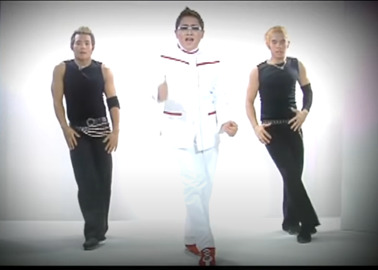
It’s no surprise that the idea of being in the LGBTQ+ community is something that is generally frowned upon, especially by our elders. This is often dealt with by parents (especially fathers) via attempting to “toughen up” their sons. The general disapproval on top of the parents’ attempts to “fix'' their children induce a kind of fear wherein the son mans up in the presence of his father by walking and talking in a more manly fashion.
The symbols:
The deep beginning
We can observe that the video starts off with a funky tune and a deep singing voice accompanied by stiff dance movements. These, accompanied by lyrics expressing disappointment and offense over being called “bakla” is a good representation of their attempt to keep their masculine front.
2. The growing confidence of the once fearful community

The symbols:
The change in the dance movements and the singer’s pitch
The change in the singers tone is very noticeable after the first chorus as both the singer and the backup dancers seem to start doing softer, more flowy movements and Bitoy begins to sing at a slightly higher pitch. This gradual transition is representative of their steady resistance to the masculine norms forced upon them in the past.
The change from standard Filipino lyrics to gay lingo
Below are sample verses from the first half of the song (top) and the second half of the song (bottom)


There is a noticeable difference in the manner of speaking and language used between the two with one being more lively and carefree than the other. Moreover, this also suggests the things one learns as they slowly gain confidence in their community and how it is eventually incorporated in the way they present themselves.
The quote at the end of the video
As a final punchline, the video ends with the quote “Ako? Bakla? Halleeerr!!!”. The term “Bakla'' has always been used as an insult in their community. The quote, however, shows how the gay community has managed to take it and own it. The confidence that their community has gained over time allowed them to wear the once derogatory term as a crown.
3. Embracing one’s true sexuality
The whole music video serves as one big metaphor for the process of coming to terms with one’s sexuality, which starts off with being in denial and ends with acceptance. The changes in the pitch, the outfits, the dance moves, and the language used in the lyrics is not there for mere comedic effect, for these changes signifies the stages of embracing one’s true sexuality that was always there and lingering in the background.
The symbols:


Removal of clothes
The quick removal of clothes in 1:33 and 2:54 in the music video signifies the stripping away of one’s masculinity, which is represented by the suit, to show their true skin. In Filipino, hindi na sila nagbabalatkayo, wherein pagbabalatkayo is often said to those who are still closeted. This quick removal also sends a message that once one is stripped away of something that is holding them back, it will become easier to show who and what they are made of since the change of outfits happened after these frames.


The background lights
Throughout the video, there are mostly two scenes: the bright scenes which have blue and pink background lights, in which the colors often represent masculinity and femininity, respectively, and the dark scenes which only have the pink background lights. The bright scene may signify the day wherein one has to pick between the two colors to show who they are, at least by the society’s standards, whereas it is clear that when everything turns dark, they choose pink - symbolizing the Filipino expression lalaki sa umaga pero babae sa gabi.
The word “Echos” at the beginning
Despite the obvious masculinity that was shown in the beginning of the music video, a gay word, echos, was said before Bitoy started singing, implying that despite showing masculinity and “being a man” from earlier times, the gayness still came first. This is also suggests that there are those who already know that they are gay right from the start, but because of the heteronormative society, they were forced to act masculine.

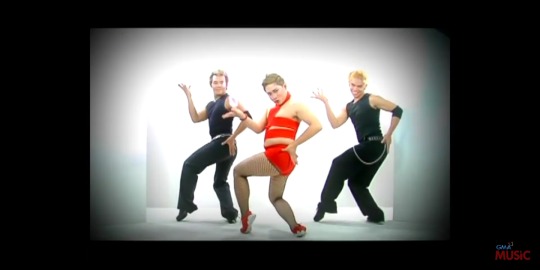
The pink spark and the pink flame
At the beginning of the video, it is seen that there is some pink spark in his hand when he said the word “echos”, again, signifying that the gayness came first before the masculine act that was done to hide one’s true sexuality. Eventually, this spark becomes a flame as he said the word “ching” in the end, which symbolizes the acceptance of one’s true sexuality resulting to a fire that empowers and fuels one's drive to unapologetically show who they really are. This flame also signifies the light that they found within themselves after being in the dark for so long.
4. Gays in the Philippines are flamboyant and comedic
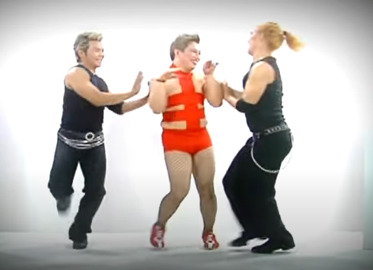
The iconic gay figures to arise on the Filipino media industry are usually in the likes of Vice Ganda, Awra, Juliana , and Chokoleit (as shown in the photos below) who are all known for their flamboyant personalities and comedic presence. Bitoy and his representation of the classic gay is no exception.

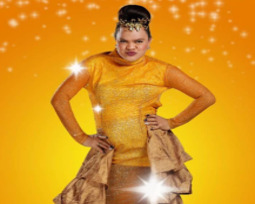
The symbols:
The atmosphere of the video
The very nature of the video exudes a comic relief aura from the onset with the words “Based on a true story” along with the funky beat and light hearted vibe and lyrics, the music video was not intended to be a heavy, serious take on the gays. It had meant to show them and the bubbly, confident personality that the people know and love which is further represented by the girly jumping and giggling at the end of the video.
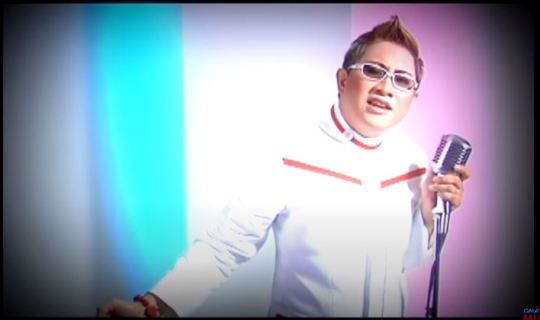


The costume changes
The costume changes in the video (especially the red outfit at the end) only further amplified the comedic aura. The cropped suit top and the red outfit are representative of the loud, unique, flamboyant fashion sense that the Filipino gays are quite known for.
References:
Michael V | Hindi Ako Bakla | Official Music Video by GMA Music Retrieved from: https://www.youtube.com/watch?v=nSkKpuldUow
Michael V “Hindi Ako Bakla” Lyrics Retrieved from: https://genius.com/Michael-v-hindi-ako-bakla-lyrics
Image sources:
Vice Ganda in Fantastica: https://lh3.googleusercontent.com/proxy/XbHBIigDPpsQU6Mv_nILm82orqR8VsvAx4eQrGsgRysUcwyqbABTEskVC7CVSaC2ZB5en2zqRYHdw-JGyL5R7mGR-mwphKjqNXKwgaNXbApnbIshaKSWw4Ewt5oqlCY
Juliana Pariscova Segovia in Fantastica:
https://m.media-amazon.com/images/M/MV5BZjhmZDViNTktZTljOS00ZmFiLTk0ZDEtYzFkNjAwNmQwMWQzXkEyXkFqcGdeQXVyNTI5NjIyMw@@._V1_SY1000_SX800_AL_.jpg
0 notes
Text
Connecting the Dots
WOMEN IN MEDIA AND BUSINESS
Women, like any other minority groups, long for proper representation for them in a male-dominated society. In the Philippines, we have been dealing with issues regarding their status in our country for years. Through some examples we gathered, this blog will talk about how women are viewed in the Philippine media: how it created a fake representation and empowerment, and how women are constantly being used as a form of sexual object, entertainment, and business profit. We will also tackle the never-ending issue of victim-blaming.
ON WOMEN’S INSECURITIES BEING USED FOR PROFIT
It is not surprising that all of us have insecurities, we have some things that we are not proud of. This especially happens to women. This part of the blog will talk about how some women handle these insecurities and how others started to see it as an opportunity for profit.
Skin Whitening Products

If you look at this without context, you may think that these two women are in some kind of competition. This image came from a brand called “Glutamax”, a skin whitening product, for their “Fair Advantage” campaign. The problem? It explicitly says that having a darker skin is “unfair” and those who have fairer skin have it better, and the only way to fight your own insecurity and discrimination you get is through having a “whiter” skin.
Filipino women’s number one insecurity is their skin color, which should not even be a problem in the first place because historically speaking, our ancestors are dark-skinned, and it’s only after colonization that we saw the rise of Filipinos who are light-skinned. And as time goes by, our standards of being ‘beautiful’ become having a pale/lighter skin color. We are not against Filipino women opting to change what they do not like about themselves but skin whitening products like Glutamax have always profited off it and create problematic, colorist, and bordering on racist campaigns that target our women, making most of us feel even more insecure and bad about ourselves.
Cosmetic Surgeries
Recently, a debate started in Twitter regarding cosmetic surgeries and whether it should be normalized. This started when singer Janine Berdin uploaded photos of her new look.

A tweet from user @yuangonzaIes said, “i think we should start normalizing cosmetic surgeries here in our country. i can still remember what some of y'all did to arci muñoz back in 2017 when she had her nose done. there's nothing wrong with cosmetic surgeries, as long as it's for yourself. ang ganda, janine berdin!” A lot of people agreed with it, receiving 6K retweets and almost 39K likes.
The problem?
While it is true that we should remove all the stigma and discrimination against cosmetic surgery, normalizing it would also mean normalizing the fact that western features are the standards of beauty. Not to mention that this has become another thing that businesses capitalize on. The same thing with skin whitening, our insecurities get weaponized against us that we choose to change our features to the ones ‘most generally accepted’. We do not shame those who undergo cosmetic surgeries as we believe that we live in a world where we are free to choose and do what we want but the right words should be used. As user @thranduilien said, “plastic (cosmetic) surgery industry capitalizes on non-white people’s insecurities and pushes Eurocentric beauty standards.”

What we should do is destigmatize and stop demonizing cosmetic surgeries and treating it like it is taboo or against society to undergo them.
Women Being Used as a “concept” to Sell Music
Almost all of us listen to music on the daily, and it is not news to us that women are often being used as a concept to music. It is most especially noticeable in the Philippines. A song by Shanti Dope – Mau, became a hit among Filipinos, especially to the kids.
Sikretong malupit, pwede pabulong?
Mapapamura ka ng fuckshit, malutong
Makinis, maputi s'ya pero ba't gano'n?
Bakit sobrang grabeng maitim ang utong?
These are the lyrics to his song that became a trend among Filipinos, and it is downright bothering and uncomfortable. The song sees women as nothing but objects that should be “shiny” and “pearly white”. It makes fun of a woman’s natural body and downplays her insecurities. This is not new to us, there are a lot of Filipino songs that see women as nothing but their bodies, they set these “standards” of being beautiful, but is it not a time for us to start calling out these artists who continuously make money by making their music all about a woman’s body?
ON OBJECTIFICATION OF WOMEN AND THE ISSUE OF RAPE
With the #MenAreTrash and #MeToo movements gaining traction in popular culture, men and patriarchy are being exposed for their normalized behavior that objectifies women. Indeed, harassment in the streets has become ordinary in our country that a law prohibiting such acts has been passed. However, the objectification of women has been normalized in media too. This other half of the blog will examine media content that depicts women as sexual objects.
The Promiscuous Mistress in Teleserye and Films
"Querida, kabit, number two, mistress..."

Illicit affairs have absurdly become a standard in the current line of soap operas and romantic films. The roots of this "tradition" can even be traced back from the early eras of Philippine media.

Two Wives (2009), Ika-anim na Utos (2016-2018) and No Other Woman (2011) and other TV shows and films like these portray women as mistresses or the "kabit". The woman plays a promiscuous homewrecker that "steals" another wife’s husband. The mistress is always blamed for the troubles, but never the cheating husband.

The kabit stereotype encloses women into a notion that they are sexually reckless beings - that they wreck homes and destroy families. When this is emphasized it hides and tolerates the promiscuity of men. Not only does it view the woman as a lesser sexual object, but it also nurtures the patriarchal reality of our country.
Women as Props in Television and Games Shows
Game shows are a big hit for entertainment on television. While they offer thrill and excitement to their audiences, there are problematic elements behind some shows like Kapamilya: Deal or No Deal and Wowowin.

In Kapamilya: Deal or No Deal, a charismatic male host Luis Manzano carries the show and helps the contestant decide in the game. But if you look in the background, dozens of women are hired to hold briefcases.

Wowowin has the same case, but even worse. While it also has the same formula of "charismatic male host and background women", Wowowin's backup female dancers are dressed in revealing clothes.
These types of actions seem to be irrelevant to the show itself. The game would still continue to be played in the way they should be. Women are just there to be decorations, a pleasant sight to see for the audience.
This way of representing women screams objectification. It reduces them to mere objects, and even worse in Wowowin's case, as sexual objects. Wowowin, Deal or No Deal, and other similar game shows only perpetuate the objectification of women - one of the struggles of womankind in a patriarchal society.
Rape Jokes Against Women on Social Media
Patriarchy has seemed to normalize the concept of sexual violence in our society. It happens within our homes, universities, workplaces, public transportation vehicles, everywhere, any time and any place. With patriarchy being a part of the everyday culture of the people, men are seen to be superior and women are only subordinates and are subjected to serve them. Because of this, societies build a certain attitude wherein women can be objectified, treated less or even worse – be sexualized.


Social media platforms such as Facebook and Twitter have been an agent in sharing and providing ideas that make the thought of sexual assault towards women as something fun and entertaining. The pictures (referred to as “memes”) shown above present how the concept of rape is something to be laughed about by people. They instituted (?) that women can easily be made fun of sexually, even if it is already degrading and disrespecting. Hundreds or even thousands of memes circle the internet creating a public attitude normalizing sexual assault and abuse, thus making rape culture common in society.
It has become a stereotype that women are always inferior and powerless. They are seen as someone who can be stepped upon. They are weak and have no courage to stand up for themselves even when they are being sexualized, which results in men treating them with disrespect, offend them with their misogynistic slurs, and disregard their importance in society.
Victim Blaming
Rape is a very traumatic experience and can create a negative psychological effect on the victim-survivor. Several myths about rape and sexual abuse still exist today. These views are widely held by many individuals and come from biases and assumptions that are expressed in our culture and perpetuate them. These myths discourage victim-survivors to come forward and stand up for themselves since society shifts the blame to them rather than the perpetrator of the crime.
Whenever we hear that someone is raped, we would always hear the following:
“Ano ba kasi ang suot mo?”
“Baka naman kasi nakainom ka?”
“Bakit ka kasi sumama sa kanya?”
“Bakit ‘di ka humingi ng tulong?”
“Ginusto mo rin naman ‘yon”
And the list goes on and on blaming the victim for the incident that had happened. People put the blame on the victim in order to lessen their discomfort about the thought and to feel good about themselves saying that they know better, that they would not be raped since they wore proper and respectable attire.


In the two photos presented above, they show how the Philippine National Police gave “helpful” tips that would prevent cases of rape in the country. Even if the police had good intentions, they promoted victim-blaming by telling women how to dress in order to be respected. Not only that, but they also served as an insult to rape and sexually abused victims. Also, both photos gave women the notion that they are raped because of their actions and preferences.
Why do women need to be restricted and told what they should wear? What they should and should not drink? Who they should and should not go out with? Why do they have to feel scared whenever they walk alone at night? Why are women blamed for showing too much skin? Why can’t they freely express themselves without being harassed and judged by society? Why blame women for being raped? Why not blame men? The rapists? Why is the woman always at fault?
The problem with rape is that society recognizes it as something that is common in the lives of women. It shows how women are undermined and disregarded by society. It confirms how the majority of the people still favor men over women, that women will always be women – weak, powerless, and defenseless, that no matter what they do, men will always be greater and powerful than them. This represents how patriarchal beliefs and power still controls how people think today – that women can always be objectified and sexualized, that men are capable of manipulating them and making them subject to their wants and needs.
WHAT SHOULD WE DO THEN?
In this post, we tackled some examples of blatant misrepresentations of women in many forms of media - from posters to tweets. We also analyzed the problematic elements behind it and its effect on them. However, just discussing these issues doesn’t seem to be enough. Women still continue to struggle in society partly because of these stereotypes engraved across every form of media. With this, we should take action and condemn these problematic portrayals. To avoid misrepresentation, we urge the media and its practitioners to:
Look into the perspective of women. Before writing a script or a pitch, walk a mile in women’s shoes before depicting them in your materials. Communicate with women. Ask them directly if your content has offensive elements. Or if not, ask yourselves if they would’ve wanted to be portrayed that way.
Research extensively. Women’s history and background should be carefully studied. This is especially for stronger and more sensitive depictions of women such as prostitutes, single mothers, transgenders, and others as their struggles should not be taken lightly.
Analyze the material for stereotypical depictions, and the relevance of them. Some media content have stereotypical descriptions and personalities of women that don't seem to add much to the storyline or impact. If it’s not necessary, please remove them.
Study the contents for any missing details or description significant to women. While we talked about irrelevant descriptions above, it’s also important to see if there are any relevant depictions of women that are not added to the material.
Give more opportunities for women in administrative offices and productions. Women should be hired more in terms of media production, directing, and decision-making. Through the vision of women, it will not just diversify the content and change the dynamics, it will make us see the world through their eyes.
Lastly and most importantly, educate the masses. Media is a powerful tool that can shape and influence the people. That power should’ve been used to educate people; instead of tolerating some ways of thinking that are shaped by the oppressive system.
References:
https://nextshark.com/whitening-brand-advertisement-colorism/
https://japansociology.com/2014/05/27/from-ebony-to-ivory-colorism-in-the-philippines/
https://twitter.com/yuangonzaIes/status/1313148930193063937
https://twitter.com/thranduilien/status/1313766901755965442
https://www.musixmatch.com/lyrics/Shanti-Dope/Mau
https://twitter.com/jaicabajar/status/1314462519189098501/photo/1
https://news.abs-cbn.com/news/07/19/18/angono-cops-sorry-for-anti-rape-tips
https://digitalcommons.sacredheart.edu/wac_prize/30/
https://www.rappler.com/nation/victim-blaming-why-survivors-sexual-violence-not-come-forward
https://coconuts.co/manila/features/mood-blood-filipino-tv-mistresses-women-love-hate/
0 notes